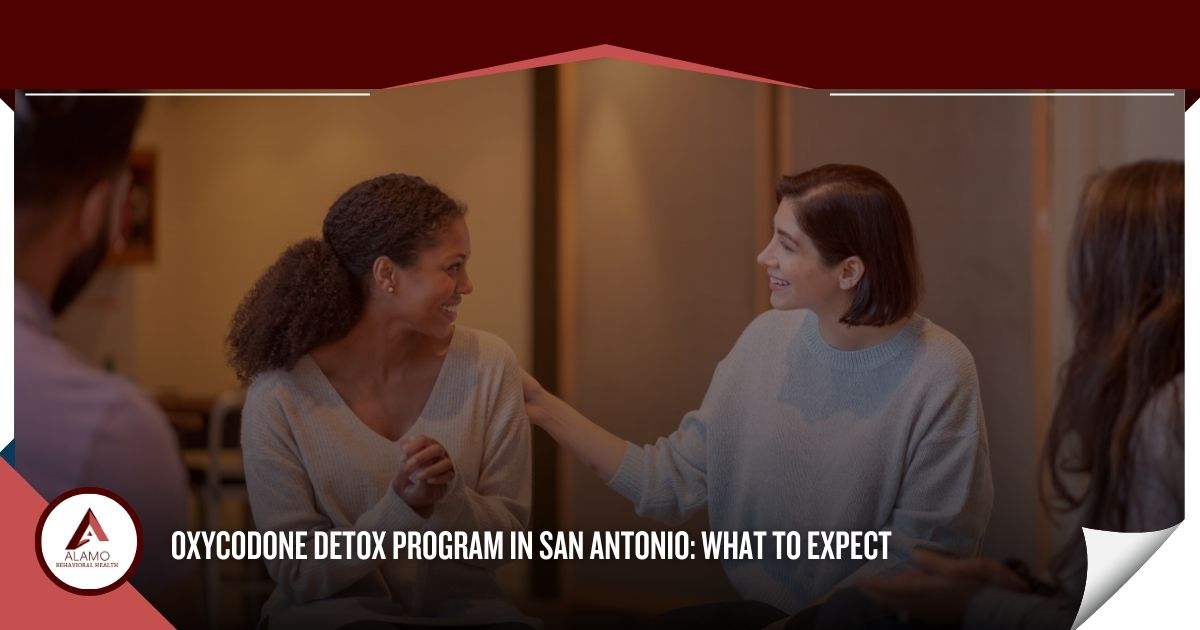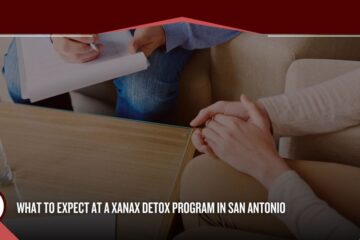Millions of people in the United States take a prescription drug to manage a medical or mental health condition. While many people believe that prescription drugs are always safe and effective, many have the potential for misuse and addiction.
Oxycodone is an addictive prescription pain reliever. It is an opioid drug. People who misuse opioids can quickly develop a physical dependence on them. Opioid addiction can be life-threatening and very challenging to overcome.
If you or someone you love struggles with oxycodone abuse or addiction, effective treatment can give you a fresh start. Most opioid addiction treatment programs begin with a medically-supported detox program.
This article will outline what to expect from a San Antonio oxycodone detox program. You will learn what will happen during each stage of withdrawal and where to find treatment and support during detox.
Reach out to the Alamo Behavioral Health team to explore your treatment options or schedule an intake assessment.
What is Oxycodone?
Oxycodone is an opioid pain reliever. It works by blocking pain signals between the body and the brain. It activates the body’s natural pain management system and reduces sensations of pain.
Oxycodone is available in several prescription medications, including:
- Oxyfast
- OxyContin
- Oxaydo
- Xtampza ER
Doctors may prescribe oxycodone to patients experiencing moderate to severe pain. People may take oxycodone after surgery, during treatment for medical conditions, or to manage chronic pain.
Like most medications, oxycodone can cause side effects. Some of the most common side effects of oxycodone include:
- Drowsiness
- Flushed skin
- Itching
- Sleepiness
- Excessive sweating
- Constipation
- Headache
- Dry mouth
- Mood swings
- Constricted (small) pupils
People who misuse oxycodone are more likely to experience unwanted side effects.
Opioids like oxycodone are highly addictive. Misusing oxycodone increases the risk of addiction. However, people may develop tolerance or other signs of dependence even when taking oxycodone as prescribed.
Oxycodone Addiction: An Overview
Oxycodone is a potent pain reliever. People may get relief from their pain after taking oxycodone when other drugs are not sufficient.
Opioids like oxycodone bind to receptors in the brain, especially in areas related to pain control, pleasure, and emotional regulation. In addition to experiencing a reduction in pain, people may also feel calm, sedated, or euphoric when taking oxycodone.
These pleasurable feelings can lead to misuse. Oxycodone misuse includes:
- Taking a larger dose than prescribed
- Taking oxycodone more often than prescribed
- Continuing to take oxycodone for longer than your doctor told you to
- Using the drug differently than prescribed, such as crushing and snorting your pills
- Taking oxycodone without a prescription (recreational use)
Misusing oxycodone is a form of substance abuse that can quickly develop into opioid dependence. People who struggle with opioid addiction usually require rehab programs and continuing support to prevent relapse.
Some of the signs of opioid addiction include:
- Having multiple prescriptions for oxycodone or other opioids
- Experiencing opioid withdrawal symptoms if you stop taking the drug
- Engaging in dangerous behaviors while under the influence of opioids, such as driving or having risky sex
- Exhibiting increased anger or aggression
- Having mood swings
- Experiencing difficulty with concentration and memory
- Lying about their opioid use
People who become addicted to opioids will continue to use them, even when the consequences are severe.
Most people with oxycodone addiction require oxycodone addiction treatment. Getting help quickly is essential to a person’s long-term success. Seek treatment as soon as you recognize a problem.
What to Expect in an Opioid Detox Program in San Antonio
Opioid addiction is a complex condition that can be very challenging to overcome. A medication-assisted treatment program can help people stop using opioids and learn to avoid relapse.
Many people begin recovery in a residential treatment center. Living in the center allows people to receive support, treatment, and supervision around the clock during the earliest days of the detox process.
Here is an overview of what to expect at each stage of an oxycodone detox program in San Antonio.
Day one
Most people begin to experience withdrawal symptoms and cravings within 8-24 hours of their last dose of oxycodone. Acute withdrawal symptoms may include:
- Sweating
- Chills
- Diarrhea
- Insomnia
- Muscle cramps
- Stomach cramping
Your detox treatment plan may include:
- Medications to reduce withdrawal symptoms and cravings
- Emotional support, including individual and group therapy
- Holistic therapies, including nutrition support, exercise, and mindfulness
Round-the-clock support and supervision will keep you safe and comfortable during the earliest stages of your detox.
Days 2-3
Your symptoms will likely peak during the second or third day of detox. You may feel miserable and require a lot of support.
During your detox program, your treatment team will assess your symptoms and offer effective care to keep you safe and comfortable.
Days 4-7
Many people discover that their withdrawal symptoms begin to improve toward the end of their first week without opioids. However, cravings and psychological symptoms can linger for weeks. It is important to have continuing support throughout the detox process.
During detox, you will have 24/7 access to mental health and medical treatment. You will receive care, treatment, and support to keep you comfortable throughout the detox process.
When your detox is complete, you must continue treatment in a comprehensive program. Comprehensive addiction treatment can help you address the roots of your substance use and develop healthy coping skills to avoid relapse in the future.
Find Help Now
If you or someone you love needs treatment for oxycodone addiction, you are not alone. Contact the Alamo Behavioral Health specialists now to explore your treatment options.




